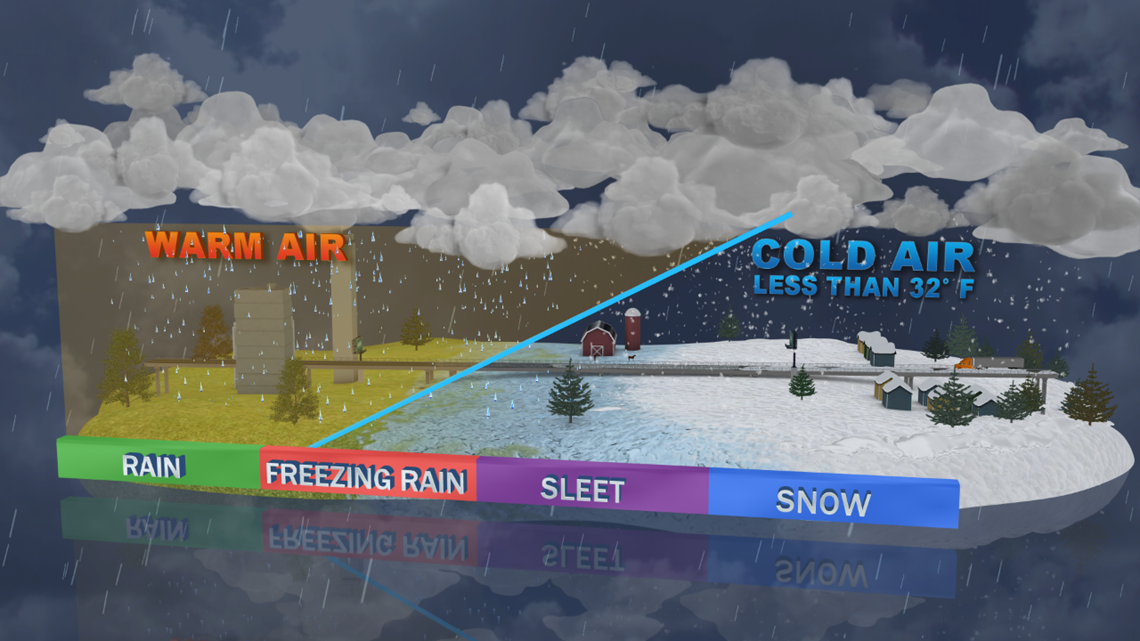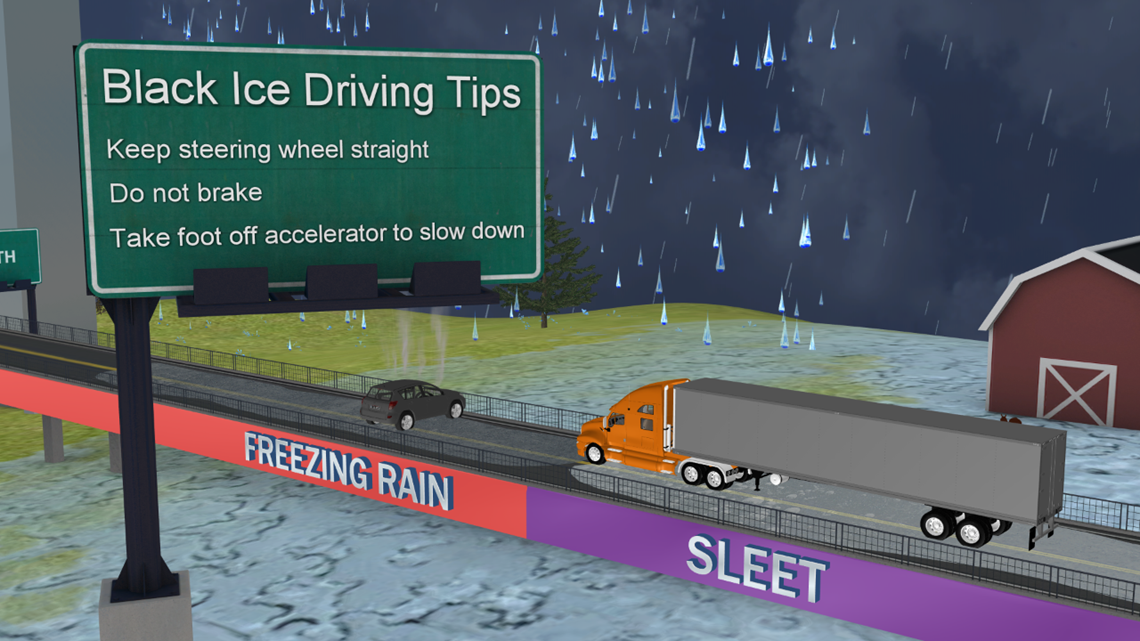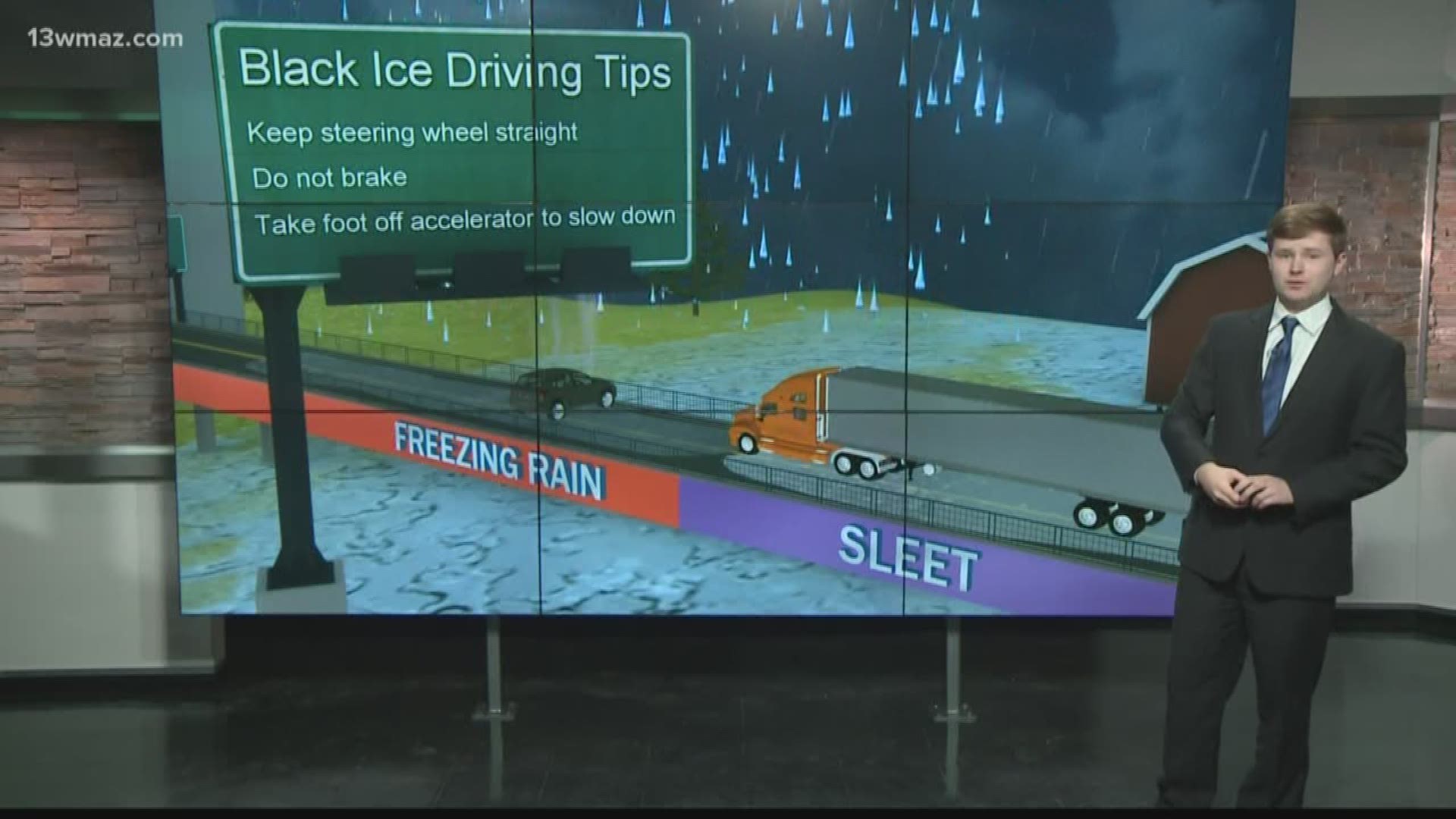MACON, Ga. — We went from summer to what feels like winter in a matter of weeks in central Georgia. With the change in seasons comes people wishing for our chance at snow, but it's not as simple as cold air and rain coming together.
Meteorologists have to forecast the temperatures at all levels of the atmosphere, not just at the surface. Correctly forecasting the temperature profile from the ground to the cloud is essential in accurately forecasting winter weather.
The four main precipitation types are rain, sleet, snow, and freezing rain.


Rain and snow are the two easiest precipitation types to understand. Rain falls when the entire column of air beneath the cloud is above freezing. Any frozen precipitation produced by the cloud melts on its way to the ground and falls as rain
Snow falls when the entire column of air from the ground to the cloud is below freezing. There can be exceptions to this rule. You may have noticed that it can snow when temperatures are above freezing at the ground. This occurs when the air near the surface is both near freezing and dry.
Sleet and freezing rain are a little more complicated and are both challenging to forecast.
Sleet forms when there is a layer of warm air somewhere between the cloud and the ground. This melts falling snow into a raindrop. Then, the liquid raindrop enters a layer of freezing air before reaching the ground. The layer of freezing air is thick enough that the entire droplet is able to refreeze.
Freezing rain forms much like sleet. Snow turns to rain as it falls through a warm layer of air. However, a shallow layer of freezing air near the surface allows this liquid water droplet to freeze on contact with subfreezing surfaces on the ground. Freezing rain is liquid precipitation. It is different from sleet. When you think of ice storms coating ice on trees and power lines, freezing rain is the culprit.
Freezing rain can lead to black ice. Black ice is transparent ice that forms on roadways. It looks just like water on the road. A driver may think he or she is about to pass over a puddle when in reality a dangerous stretch of road lies ahead.
If you encounter black ice, do not accelerate or press the brakes. Hold the steering wheel straight until your tires can regain traction.


There is no significant winter weather in our forecast for the foreseeable future, but we'll be watching all winter long to see if we have any chances.
STAY ALERT | Download our FREE app now to receive breaking news and weather alerts. You can find the app on the Apple Store and Google Play.
STAY UPDATED | Click here to subscribe to our Midday Minute newsletter and receive the latest headlines and information in your inbox every day.
Have a news tip? Email news@13wmaz.com, or visit our Facebook page.

